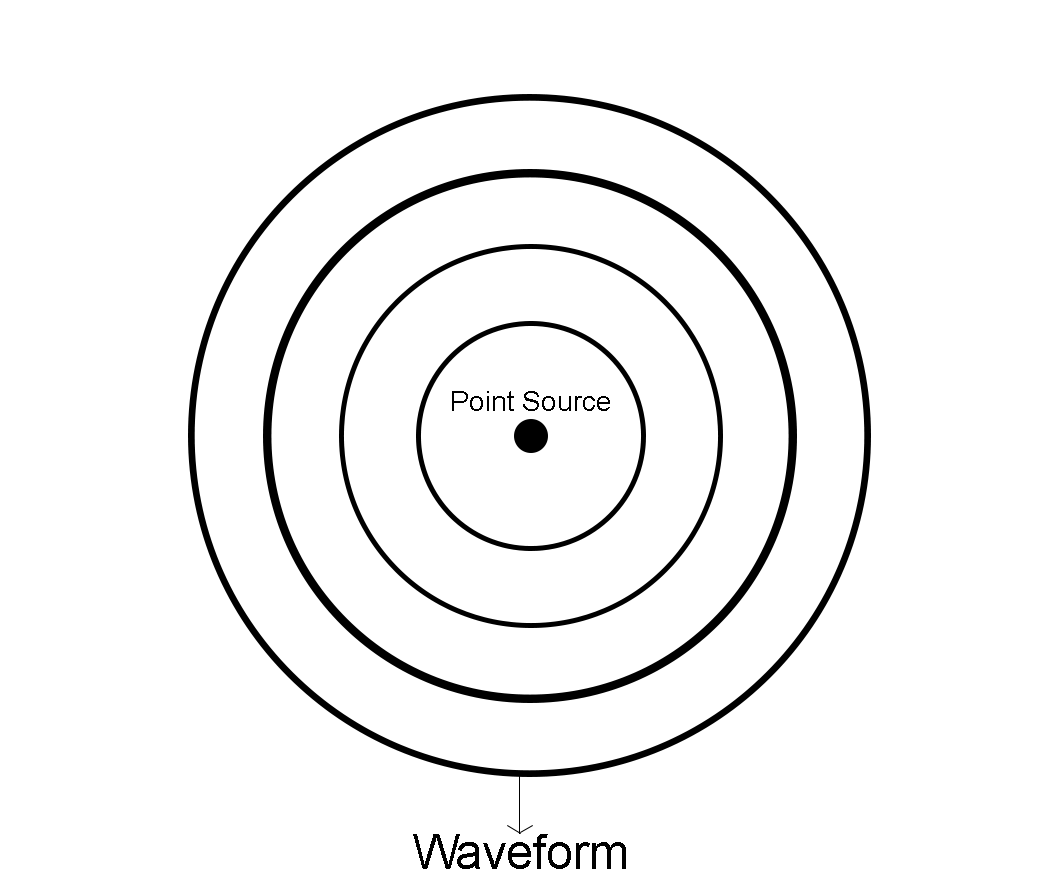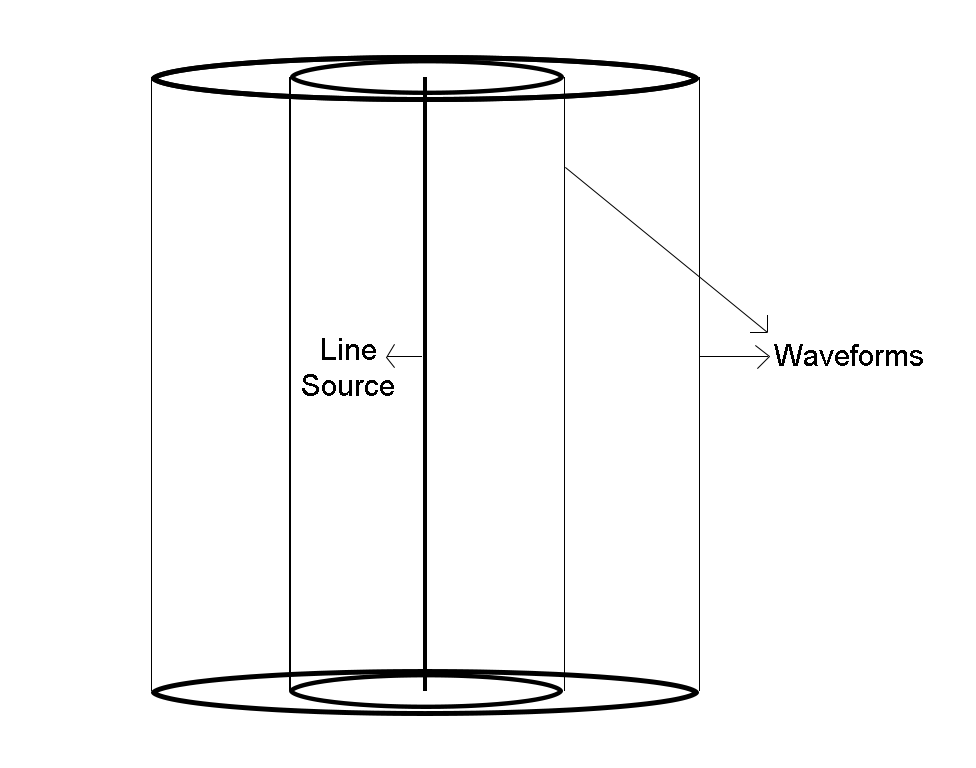
What is the shape of the wavefront originating from
A. A point source
B. A line source?
Answer
499.8k+ views
Hint: You can start by briefly explaining the wavefront. Then describe the spherical waveform formed by a point source and the cylindrical waveform formed by a line source along with the diagrams of the waveforms.
Complete answer:
Before discussing the shapes of wavefront originating from a point source and a line source, it will be beneficial to discuss what a wavefront is
Wavefront – If we consider a time-varying field we have a set (locus) of points in which all the particles have the same phase. When we join all these points we get what we call a waveform. This waveform moves with time and its dimension changes.
For a point source – For a point source, the waveform spreads in the form of a sphere, every point on the waveform is equidistant from the point source. Every point on this spherical waveform will have the same phase.
The wavefront of a point source is shown below

For a line source – For a line source, the waveform spreads in the form of a cylinder, every point on the waveform is equidistant from the nearest point on the line. Every point on this cylindrical waveform will have the same phase.
The wavefront of a line source is shown below

So, the correct answer is “Option A”.
Note:
In the solution above, we discussed how the wavefront propagates with time. A quick method to predict the propagation of a waveform is to use the Huygens-Fresnel principle, i.e. every point where a waveform disturbance reaches in itself becomes a source of spherical wavelets and emits secondary wavelets.
Complete answer:
Before discussing the shapes of wavefront originating from a point source and a line source, it will be beneficial to discuss what a wavefront is
Wavefront – If we consider a time-varying field we have a set (locus) of points in which all the particles have the same phase. When we join all these points we get what we call a waveform. This waveform moves with time and its dimension changes.
For a point source – For a point source, the waveform spreads in the form of a sphere, every point on the waveform is equidistant from the point source. Every point on this spherical waveform will have the same phase.
The wavefront of a point source is shown below

For a line source – For a line source, the waveform spreads in the form of a cylinder, every point on the waveform is equidistant from the nearest point on the line. Every point on this cylindrical waveform will have the same phase.
The wavefront of a line source is shown below

So, the correct answer is “Option A”.
Note:
In the solution above, we discussed how the wavefront propagates with time. A quick method to predict the propagation of a waveform is to use the Huygens-Fresnel principle, i.e. every point where a waveform disturbance reaches in itself becomes a source of spherical wavelets and emits secondary wavelets.
Recently Updated Pages
Master Class 12 Business Studies: Engaging Questions & Answers for Success

Master Class 12 English: Engaging Questions & Answers for Success

Master Class 12 Social Science: Engaging Questions & Answers for Success

Master Class 12 Chemistry: Engaging Questions & Answers for Success

Class 12 Question and Answer - Your Ultimate Solutions Guide

Master Class 11 Economics: Engaging Questions & Answers for Success

Trending doubts
Draw a labelled sketch of the human eye class 12 physics CBSE

a Tabulate the differences in the characteristics of class 12 chemistry CBSE

Which one of the following is a true fish A Jellyfish class 12 biology CBSE

Why is the cell called the structural and functional class 12 biology CBSE

Differentiate between homogeneous and heterogeneous class 12 chemistry CBSE

Write the difference between solid liquid and gas class 12 chemistry CBSE




